We decided to go out west for a few days to another town called Babati where there is a similar project being undertaken but in a bigger way than our Gairo project. We thought by watching what they were doing we would get some good information to take down for our project in Gairo. We took Peter, a local person from ADRA, who has been helping us with various projects at ADRA. Peter has also been teaching us Swahili. In Babati they are installing new wells and refurbishing old wells that are no longer being used for a variety of reasons, including a missing pump, a broken pump, a broken concrete slab or no water there anymore. In Gairo we are to install new wells only as there are no other older ones there. We drove through Arusha and stopped off at Musa’s office and told him we were heading out there. He said, “ you are not taking your truck on that road are you?” The road is very bad. But we went anyway. Babati is about 200 km (120 miles) west of Arusah. The first 120 km are also on the way to the big game parks, so the roads are nicely sealed. However once past the game parks and tourists area, there is no longer “an international need” to go there, so the tarmac disappears and it is a gravel and dirt road. It looks smooth from a distance, but the corrugations and potholes make it a real bone shaker. About 20 km/hr was all we could do in many places. It is wide enough for 2 lanes but one drives anywhere to find the smoothest path. Off to the right for a few 100 meters, then switch over to the left for the next few 100 meters, then off the road on the shoulder for a bit more. There are a few buses coming through all the time and they just fly by bouncing around. Every now and then we came across one fixing a puncture or broken axel possibly. We could also see some trucks driving on a parallel-ish dirt path off to the right in the scrub. I asked Peter what that was and he said we should not drive there because it was single lane, and we couldn’t see far enough though the scrub plus the trucks drive fast there. But after about another 30 mins of unending shaking Peter said, “OK, go to the dirt road”. It was such a relief, we could get up to about 40 km/hr in places! In other places, we almost came to a stop to cross some washed out crevice. But it was a lot faster. The track passed through the back of houses that were on the official road side. I couldn’t tell sometimes if we were on a dirt road or driving through some ones yard. The locals would stare at our truck driving along this path. Luckily we didn’t meet many big trucks on this dirt path and we got to Babati just on dusk, having taken about 4 hours to drive the 200 km.
The next day the project leader there and a few others piled us into their Landcruiser and we headed out to the rural villages where the work was being done. She said our little truck may not handle these roads too well. We soon found out why very quickly! They are no roads, only dirt tracks through the scrub and trees that the locals use. No government assistance to make any roads for the people at all. It was dry so it was not too bad, but can’t imagine what would happen when it is wet. The first site we visited was a new well site being drilled. To get a picture of where these are installed, don’t think of a well being installed on a street corner or such but picture an area with rolling hills, no fences anywhere and a well just drilled at some location in a field. (The well sites had previously been sited by a water diviner.)
This location was on the side of a hill. The drillers were a contracting company from Arusha. They were using an older style rig that used percussion or cable tool method. This rig repetitively lifts and drops a weight onto a drill bit down the hole. The bit crushes the rock down to sand like particles. Then every 10 mins of so, they pull the weight and bit out of the hole, lower down a long steel bailer to surge up and down, partially filling it with the newly crushed sand. Then they lift that out and tip it upside down using the winch to dump its contents on the ground. They do this a few times then go back to drilling again. The method is slow compared to other drilling methods but it is lower cost and does not require large air compressors and such. They were down about 30 m deep when we arrived.
The drillers stay on site. They put up a small tent with a “bed” covered by a mosquito net and cook their meals over an open fire. At this time of year it is quite warm but not too hot.
We stayed there about 2 hours to watch their operation. That drilling method was new to us (because it’s not often used in Australia anymore)but the other office staff had seen it all before so they were doing other activities while we watched.
Next we were taken over to a natural spring that had a small flow of coming water from it. It was in some trees on the side of a hill just up from the bottom of the gulley. There was a local woman there getting water in some buckets to take back up the hill to her house, but we had no idea how far she lived from there. It could have been several kilometres away and she was carrying the water. The water out of the spring was clean it seemed but when it ran into a little pool where the buckets were being filled from, it got a bit cloudy. The woman was asked if the water was boiled before it was drank. She said some do and some don’t.
An old abandoned site was the next visit. This was a small (2 m diameter) domed slab that used to have a pump on it, but the pump was gone and a rock covered the well opening. We met the village executive officer at that site. It seems every village has a person with this title and they look after the affairs of the village, but we are still finding out more about how the management of these villages is set up. On the way back to the office in Babati again, we stopped for a coke (this was lunch!) then stopped at a working water well. This was in a more conventional village with a main street and a few shops and houses. There were a number of adults and children at this well filling up buckets with water from the hand pump. They would then put them on their head and walk back to their homes. The field engineer with us noticed the children were doing short strokes on the pump (almost a dance) so he showed them how to long slow strokes with the pump and get more water.
At night we stayed in a local “hotel” that was inexpensive and nice and clean. They didn’t really have a menu so we asked for chicken and rice with vegetables. The roast chicken came out first but none of the pieces on the plate resembled any chicken we had ever seen before. The chickens here seem to have a lean life as there was no meat on the bones! There was a kitty hanging around and he liked us as we shared this “chicken” with him!
The next day we went back out to the abandoned site as it was to be refurbished that day. So we decided to spend an extra day to help and watch them build a new pump slab and install a pump. There was a local masonry technician there that day to do the concrete works. When we got to site, somehow over night the locals had arranged to drop off a couple of truck loads of sand and some biggish rocks. A number of the locals were there with hammers, pick, axes and attacking these big rocks breaking them down into little pebbles to use in the concrete. There was no other source of gravel around. The first thing was break up the old slab and remove it which didn’t take too long as it looked like little effort had been spent on it in the first place. Then over the rest of the day a new slab was constructed. We didn’t quite get finished so the technician was going back the next day to do the final plastering and install the pump. There is quite a bit to do to make one of these slabs as we learned. We have to think about channelling the spilled water off in the right direction otherwise it gets all muddy around the area and the mud gets tramped back onto the slab. The top of the slab has to be high enough to be above any natural running water the rains cause. There also needs to be a fence around the water source to keep livestock out and to keep kids from using it as a playground.
That night back in Babati, it rained hard. We both woke up during the night and wondered what the road was going to be like in the morning for the drive back to Arusha! It was still very rough and slow but not a mud pool like we thought it might be in places. The side road we had used on the way out, was no longer driveable, as most of it was covered in water. We got stopped by police check points twice on the way back . One said we had to pay a fine for not having a certified copy of the ownership papers with us. We tried to explain we did not know it had to be a certified copy. Then he just waved us on. We were very glad we had Peter with us. (Later in the week we asked Musa bout this and he said it didn’t have to be a certified copy.) Back in Arusha it had also rained and some of the back dirt streets were now potholes full of water.Overall it was a good learning trip for us.
Subscribe to:
Post Comments (Atom)
































































































































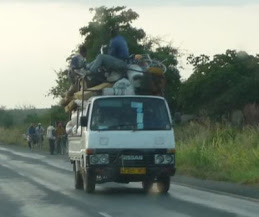





























































































































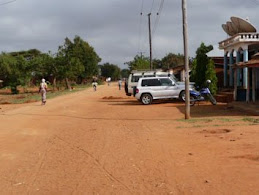

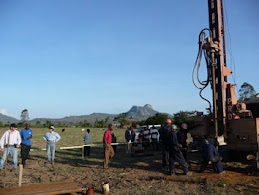


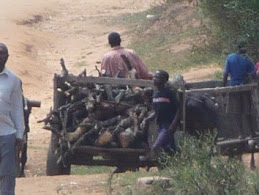
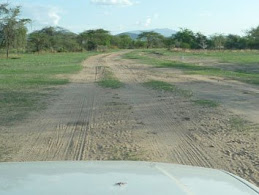























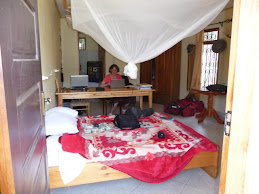

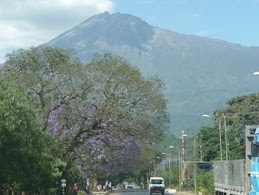
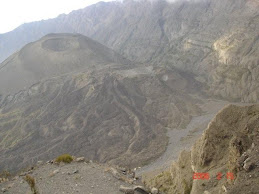
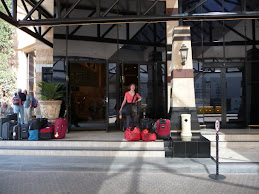
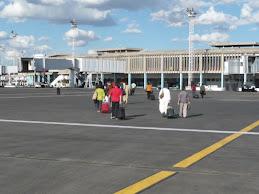
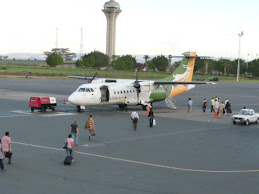
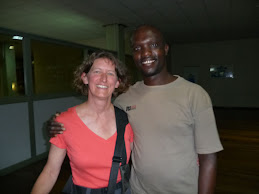
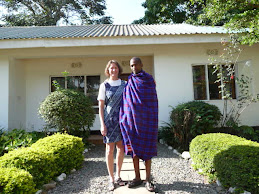
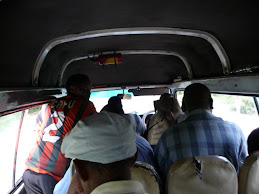


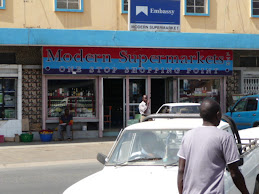





1 comment:
Hi dear Ross & Ramona!!
Wow!! Very impressive all together,...are you both maybe work workaholics? ;-)
Before I forget,...Ross >> Happy Birthday!! a bit late, sorry!
Today we all started at Scoresby,...bit strange but Biolab has done a good job although it's now a real goodbye to Port Melbourne and Danny,...
I will have a regular look at your blog and if I could I would send you a Christmas card but in advance this is my sort of CM wishes for the both of you!
Anyway,...it's good to see that you are doing fine and are making a difference for a lot of people, that's so noble and allrighty!!
Have a wonderful time out there and know that we here in Melbourne are thinking about you both!! We missed you at the fare well party for Danny at the London pub but you both were there in spirit;-)
All the best and nothing but good,...cheers Jan
Post a Comment